What happens when a rich Cardinal and fervent art collector becomes the patron of some of the most famous artists in history?
He needs a place to store all of his art, so he builds himself a villa for this particular purpose.
In this post, we’ll take a closer look at some of the most interesting Galleria Borghese facts, an excessive villa that was transformed into one of the most famous art galleries in the city of Rome.
1. The structure was built in the early 17th century
The Galleria Borghese is one of the most popular art galleries in Rome and is housed in the former Villa Borghese Pinciana. It was commissioned by Cardinal Scipione Borghese (1577-1633), as a so-called “Villa Suburbana,” a large country house on the outskirts of Rome, and completed in the year 1613.
The Cardinal was a member of the rich and influential Borghese family and a nephew of Pope Paul V (1550-1621). As the Pope’s private secretary he was able to amass a fortune by collecting huge amounts of taxes on the Pope’s behalf.
This not only allowed him to build this ultra-luxurious estate but also collect art and become the patron of some of the biggest artists in history, including Caravaggio (1571-1610) and the young Gian Lorenzo Bernini (1598-1680).
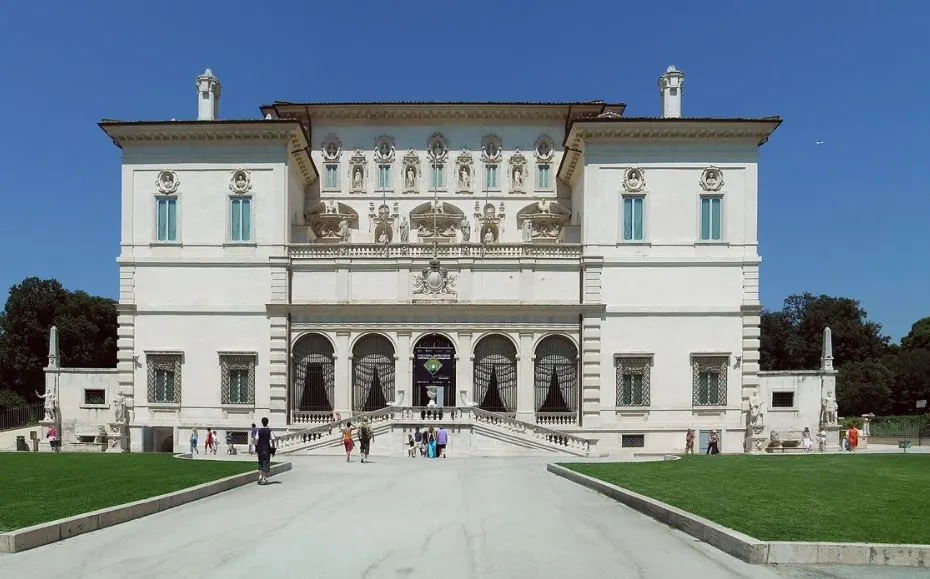
2. It’s located within the third-largest public park in Rome
The Villa was built in an immense garden that covers an area of 80 hectares (197.7 acres). This garden is now a park called the “Villa Borghese gardens” and is the third-largest public park in Rome.
The Villa and park are located to the northeast of the historical center of the city on the so-called “Pincian Hill.” What’s remarkable is that this hill isn’t considered to be one of the 7 traditional hills of Rome, even though the area bordered the city center and even lay within the ancient Roman city walls since the 3rd century A.D.
The Galleria Borghese is situated at the eastern end of this immense landscaped park. On the western end, adjoining the park, there are 2 more famous museums in Rome called the “Galleria Nazionale d’Arte Moderna,” dedicated to modern art, and the “Museo Nazionale Etrusco,” dedicated to the people that came before the Romans, the Etruscans.

One side of the park, in the southwestern corner, also gives access to the Spanish Steps, the most famous staircase in Rome!

3. It started as a private collection of the Cardinal
Cardinal Scipione Borghese became incredibly rich due to nepotism and his hunger to collect art. He commissioned paintings from many of the leading artists of the time and also bought paintings all across Europe.
This laid the foundation for the Borghese Collection which was housed at his immense Villa, the surrounding park, and various additional structures located within the compound.
Various works were added in the centuries following Scipione Borghese’s death, including a substantial collection of Olimpia Aldobrandini, Cardinal Salviati, and Lucretia d’Este in the year 1682.

4. The Cardinal had a hand in the building’s design
The Villa and park were built on the grounds of a former ancient Roman park called the gardens of Lucullus which dated back to the late Roman Republic. This was one of the most extensive estates of ancient Rome that was by the 17th century used as a vineyard.
The Cardinal commissioned the park and Villa in the year 1605 and made several drawings. He eventually gave these scribblings to architect Flaminio Ponzio who at the same time was given the commission to renovate the façade of the Palazzo Borghese in central Rome together with his colleague, the Flemish architect Giovanni Vasanzio.
The elaborately decorated Villa was finally completed in 1613 and the Cardinal’s art collection was permanently moved here shortly after.
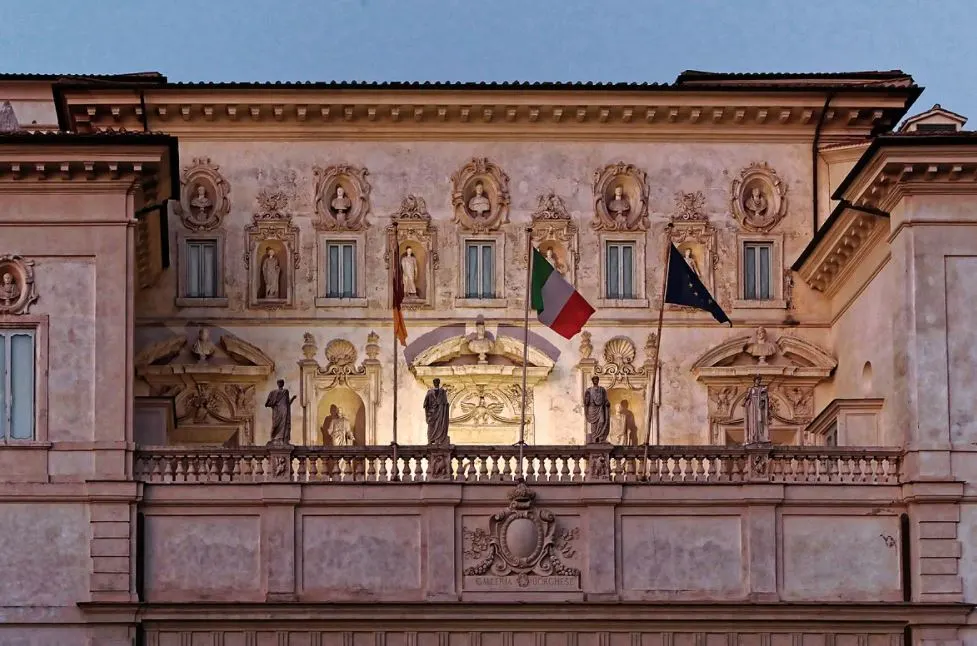
5. The park was transformed into an English garden in the 18th century
One of the most remarkable Galleria Borghese facts is that the garden was turned into an English landscaped garden in the 18th century. This type of garden replaced the formal style garden which became popular in France and the rest of Europe in the 17th century.
This means that it features lakes, mowed lawns, and groves of trees in an attempt to present an idealized version of nature. A temple was also added during this period referred to as the “Temple of Aesculapius,” a structure completed between 1785 and 1792.
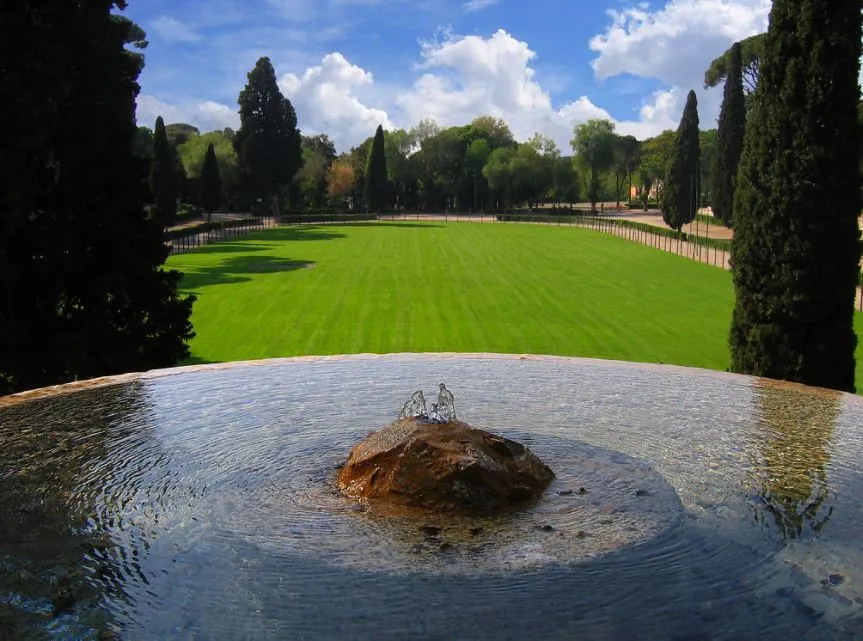
6. Many sculptures were transferred to France due to Napoleon’s little sister
Even though most of the collection remains intact until today, some notable sculptures were moved to Paris in the early 19th century. This was the time that the little sister of Napoleon, Pauline Bonaparte (1780-1825), got married to a member of the Borghese family called Don Camillo Filippo Ludovico Borghese (1775-1832).
The marriage in 1803 resulted in Prince Camillo Borghese being bestowed with titles given to him by his infamous brother-in-law, so he couldn’t say no to the offer to sell some of the most famous sculptures in the collection.
The works that were moved to the Louvre in Paris included the “Borghese Gladiator,” an ancient sculpture dating back to 100 B.C., and the “Borghese Hermaphroditus,” another ancient sculpture for which Bernini created the mattress upon which this ancient lady now lies.
Remarkably, another famous Bernini sculpture called “Venus Victrix” (1805-1808) which depicts Pauline Bonaparte herself remained in the collection and is still on public display at the Galleria Borghese today!

7. The Borghese Museum was established in the early 20th century
The Villa as it appears today wasn’t nearly as big as it was upon completion in the year 1613. It was expanded several times over the course of the centuries as it switched hands to new members of the Borghese family.
The property, including the immense garden, was eventually sold to the Italian government in the year 1902. Just a year after, the park was officially turned into a public park (it was already informally open before that), and the Galleria Borghese Museum was established.
Today, an estimated 500,000 people visit the museum every year to admire the famous works of art on display and the amazing frescoes on the walls and ceilings.

8. The museum’s 20 rooms display a wide variety of fine art
The museum has a total of 20 rooms on two floors which display a wide variety of artworks. The first floor features the classical works of art that were created during antiquity. The Neo-Classical works are on display here as well, including for example the Venus Victrix and multiple famous works by Gian Lorenzo Bernini.
The second floor features some of the most famous paintings in the world by some of the most renowned artists in history. Some of these include:
- The Deposition by Raphael (1507)
- Sacred and Profane Love by Titian (1514)
- St John the Baptist by Paolo Veronese (1562)
- Saint Jerome Writing by Caravaggio (1606)
- Susanna and The Elders by Peter Paul Rubens (1608)
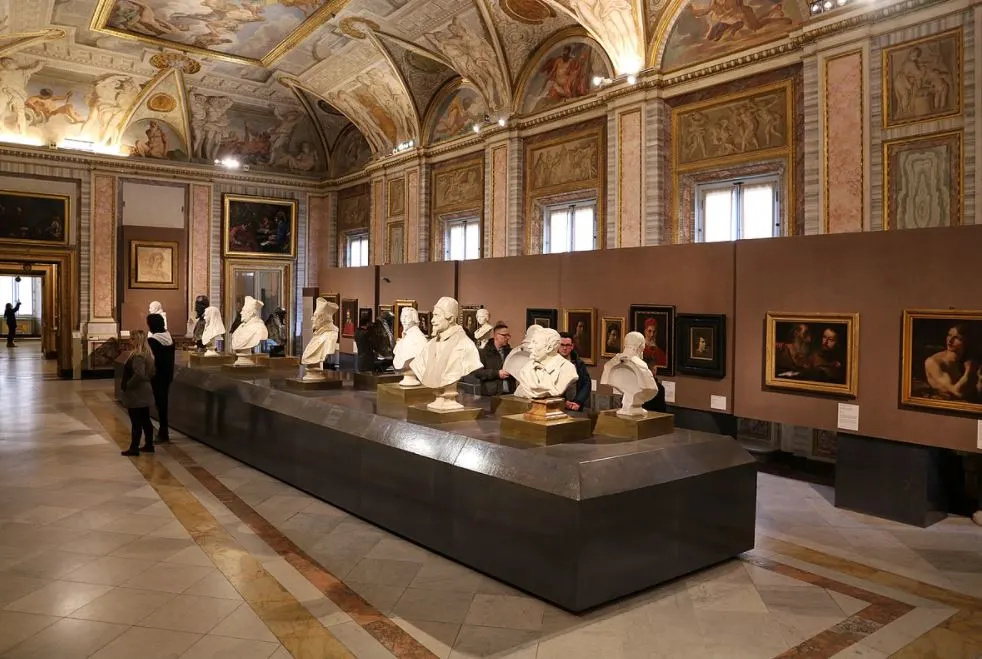
9. The ceiling of the main room is an attraction in itself
The main floor has a main room which is referred to as the “Salone.” The ceiling of this room was decorated by Sicilian artist Mariano Rossi (1731-1807) and features an amazing fresco painting as a so-called “trompe-l’œil.”
This means that it was painted in such a way that it appears to be almost three-dimensional, something that makes the ceiling of the room appear much higher than it really is.
This magnificent fresco depicts “Marcus Furius Camillus Fighting Brennus and his Gauls, while Romulus Entreats Jupiter to Help Rome” and was completed between 1775 and 1779.
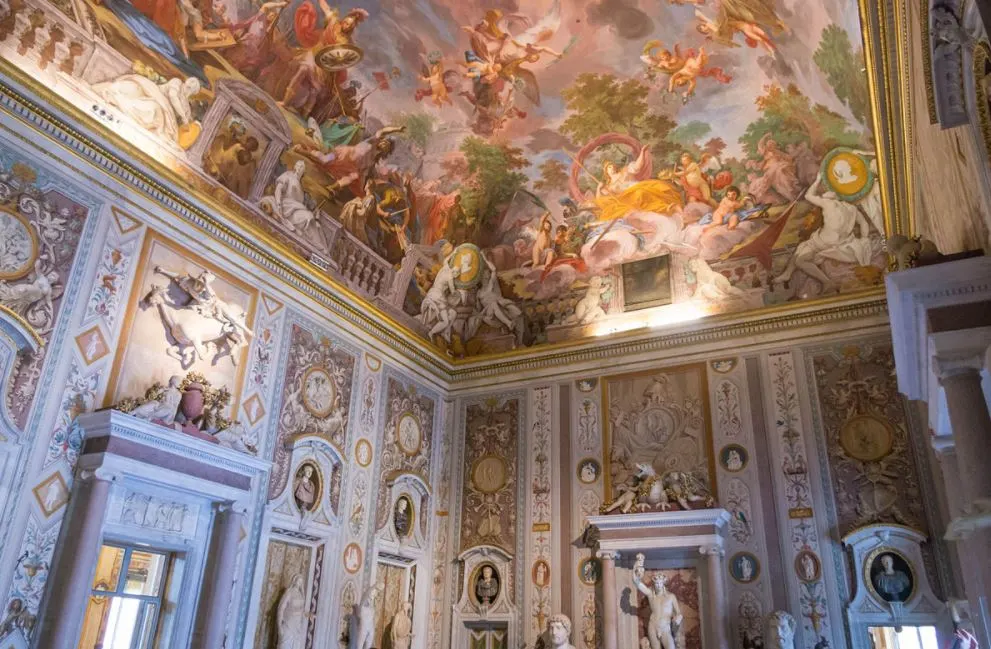
10. Two busts of the man who started the collection are on display
Gian Lorenzo Bernini’s career in Rome was literally launched by Cardinal Scipione Borghese. This resulted in him becoming the main architect of St. Peter’s Basilica and designing St. Peter’s Square, and leaving his permanent mark on the city of Rome.
Bernini created two busts in honor of the man who supported him early on in 1632, both of which are now on public display at the Galleria Borghese as well. He created the second one because the first one started showing a crack. Can’t have that, right?

